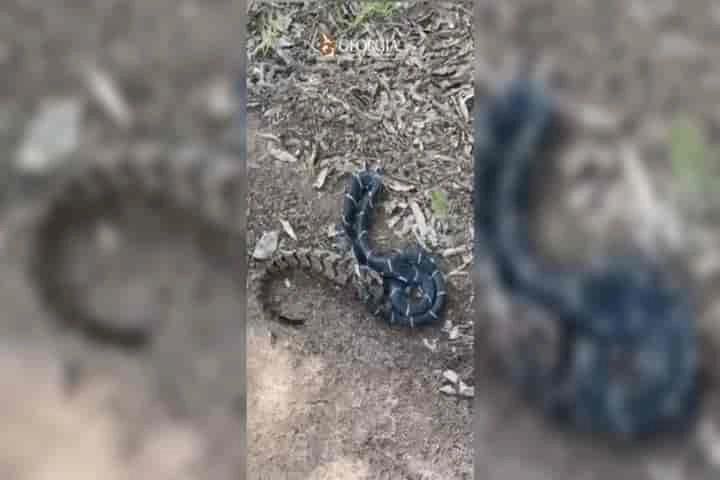It is usually expected that a creature which is bigger, faster and deadlier will be able to eat another animal either from its own species or another. Yet, sometimes the reverse happens as was seen in a video footage in which a brave viper was seen devouring another snake larger than it – headfirst!
This unexpected incident was reported in an article in livescience.com which said that the footage was shot by 82-year-old Tom Slagle in Haddock, Georgia, US. The octogenarian was rather amazed to see the two snakes entwined in his mailbox with one snake already making a meal of the other when he decided to film it.
This recording was shared on the Facebook by the Georgia Department of Natural Resources with a witty caption: "It's a snake eat snake world out there."
The video shows an eastern kingsnake or Lampropeltis getula swallowing down gradually by moving its flexible lower jaw the body of timber rattlesnake or Crotalus horridus – bigger than it. The rattlesnake is not seen moving so it is safe to assume that it was dead before being eaten.
As a part of one snake had already been eaten, it is difficult to guess and compare the sizes of these vipers. In the wild, timber rattlesnakes usually grow 6 feet in length and in comparison, the eastern kingsnake reaches the maximum length of 3.9 feet. The filmed rattlesnake clearly looks bulkier than the kingsnake, suggesting that it may have been heavier.
Many snakes are engineered to take on and eat prey much bigger than them including cows, deer and even humans but it does not usually consist of larger snakes. Generally, it is the bigger ones which eat up the smaller ones.
Also read: Caught on Camera: India's deadliest snakes – Cobra and Russell’s Viper fight to the finish
While the above holds true for a majority of the vipers, the Eastern kingsnakes are among the exceptions which can eat larger snakes. Their usual diet consists of rodents, birds, lizards and eggs of freshwater turtles. Being constrictors, they bite the prey near the neck and then wrap themselves around the animal to squeeze it to death. Interestingly, kingsnakes are non-venomous but have developed immunity to the toxins of some venomous vipers allowing them to dine safely and well on copperheads, cottonmouths and rattlesnakes.
The two adversaries shot on the film are found across the eastern United States region. However, some populations of eastern kingsnake are decreasing rapidly and therefore have been listed as protected species in Georgia.




















